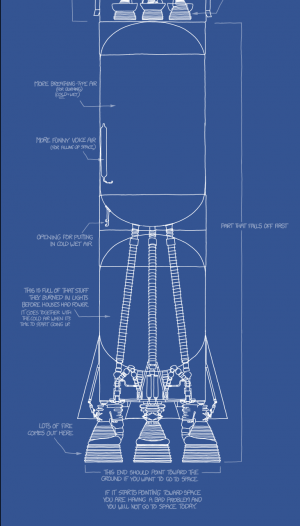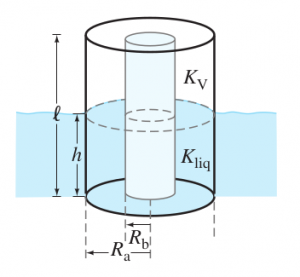Difference between revisions of "106-2018192 Practice for Midterm 1"
| Line 9: | Line 9: | ||
and <math>R_b</math> = 4.5 mm. For liquid nitrogen (<math>K_{\textrm{liq}}</math> = 1.4, (<math>K_{\textrm{V}}</math>) = 1.0), what values of <math>C</math> (in pF) will correspond to the tank being completely full and completely empty? | and <math>R_b</math> = 4.5 mm. For liquid nitrogen (<math>K_{\textrm{liq}}</math> = 1.4, (<math>K_{\textrm{V}}</math>) = 1.0), what values of <math>C</math> (in pF) will correspond to the tank being completely full and completely empty? | ||
[[File:106practice1Q1F2.png|none|300px|The model for Liquid Nitrogen container]] | [[File:106practice1Q1F2.png|none|300px|The model for Liquid Nitrogen container]] | ||
| + | |||
==Question 2== | ==Question 2== | ||
| + | Your team is tasked to explore novel methods of ion propulsion for cubesats, in order to be able to send a 1.5u cubesat exploration to the heliopause (the boundary between the Sun's solar wind and the interstellar medium). You are experimenting on using Barium and the solar radiation itself. The UV light from the sun provides enough energy to some electrons in barium metal to eject them from the surface at high speed. To measure the maximum energy of such electrons, you place another plate above the barium surface, kept at a negative enough potential, so that the emitted electrons are slowed down and stopped, and return to the barium surface. If the plate voltage is –3.02 V (compared to the barium) when the fastest electrons are stopped, what was the Plate speed of these electrons when they were emitted? | ||
Revision as of 23:35, 17 March 2019
Disclaimer: These are some random questions which does not have anything to do with the exam. I have no idea or any say about exam questions.
Question 1
Your team is working on Saturn V's F1 engines. You are tasked with finding a way to measure the amount of liquid Nitrogen left in the tank which is responsible for filling the space the oxidizer is spent in a precise and quick manner without igniting a spark in a very very volatile situation. A capacitive level sensor is the way to go. The tank can be modeled as a vertically aligned cylindrical capacitor with outer and inner conductor radii and , whose length spans the height of the tank. When a nonconducting liquid fills the tank to a height from the tank’s bottom, the dielectric in the lower and upper region between the cylindrical conductors is the liquid () and its vapor (), respectively
(a) Determine a formula for the fraction of the tank filled by liquid in terms of the level-sensor capacitance .
(b) By connecting a capacitance-measuring instrument to the level sensor, can be monitored. Assume the sensor dimensions are = 2.0 m, = 5.0 mm, and = 4.5 mm. For liquid nitrogen ( = 1.4, () = 1.0), what values of (in pF) will correspond to the tank being completely full and completely empty?
Question 2
Your team is tasked to explore novel methods of ion propulsion for cubesats, in order to be able to send a 1.5u cubesat exploration to the heliopause (the boundary between the Sun's solar wind and the interstellar medium). You are experimenting on using Barium and the solar radiation itself. The UV light from the sun provides enough energy to some electrons in barium metal to eject them from the surface at high speed. To measure the maximum energy of such electrons, you place another plate above the barium surface, kept at a negative enough potential, so that the emitted electrons are slowed down and stopped, and return to the barium surface. If the plate voltage is –3.02 V (compared to the barium) when the fastest electrons are stopped, what was the Plate speed of these electrons when they were emitted?










